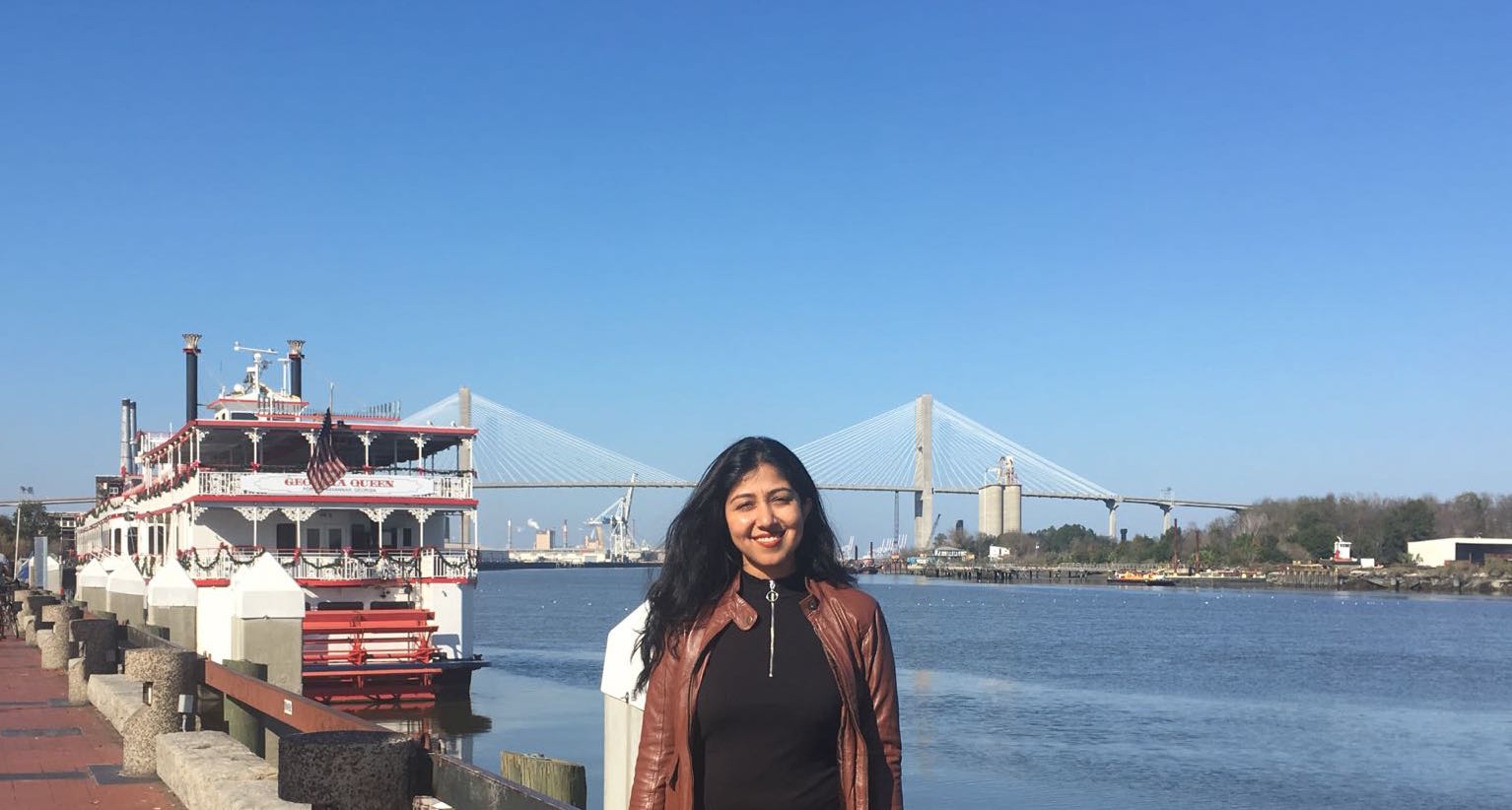
Three years later, I enrolled in the “atmospheric and oceanic science” Ph.D. program at the University of Maryland in the United States, to learn about weather, climate, and how to predict it. For my doctoral thesis, I studied convective thunderstorms and researched ways to improve their prediction using a state-of-the-art regional climate model. Following this, I assumed a postdoctoral position at NASA Goddard Space Flight Center to study atmospheric boundary layer turbulence in the Arctic using satellite observations.
While the polar atmosphere appeared to be relatively stable, any illusion of climatic equilibrium was quickly lifted. The Earth’s energy budget is changing due to greenhouse gases, and I learned that polar regions are at the forefront of this change (owing to the ice-albedo, cloud, and other feedbacks). The Arctic sea ice cover is diminishing and cloud fraction is increasing. We are observing climatic teleconnections between the melting Arctic ice and North American and European winters as well as the Indian monsoons.
My present research explores the interaction between ice, atmosphere, and clouds in polar regions, as they control the surface radiation and energy budget. Using remote sensing and in situ observations, I investigate the surface-atmosphere-cloud coupling over sea ice as well as the newly ice-free Arctic Ocean, and compare it with model predictions.
In the densely populated regions of the world, threats to human life are easily perceptible and often local in nature. It therefore seems ironic that the remote and pristine polar regions and their melting ice-sheets may pose a risk to global sea level rise. In order to work towards sustainable development, my role as a polar atmospheric scientist extends beyond understanding and predicting the Arctic climate to evaluating its implications within a local and global framework. But to do so, it is necessary to collaborate with other disciplines, as well as learn to effectively communicate my findings.
When I learned about the IASC fellowship, it sounded like the ideal platform to expand my scientific network and to pursue interdisciplinary collaboration with glaciologists, oceanographers, marine biologists, and social and other scientists. The IASC working groups are an excellent mix of scientists working towards goal-oriented tasks. As an IASC Fellow, I am invited to join a scientific working group and given opportunities to participate in their activities as well as to help organize international workshops and conferences. The Fellowship has allowed me to wade into the depths and breadths of Arctic research while opening up pathways for teamwork and better communication. The range of opportunities offered by this fellowship is invaluable for any early career polar researcher. Moving forward, I am hopeful that our community of IASC fellows becomes the flag bearers of Arctic research and sustainable development.
Manisha Ganeshan, Atmosphere Working Group Fellow 2017
The IASC Fellowship Program is meant to engage Early Career Scientists (ECS) in the work of the IASC Working Groups (WGs). IASC Fellows are doctoral or postdoctoral researchers who actively participate in selected activities of the IASC WGs. The total duration of the IASC Fellowship Program is 1+2 years. After the first year the Fellows have an opportunity to stay involved up to 2 more years. The further involvement is individually decided by the WG Steering Group and the Fellow.
The IASC fellowship Program opens for new candidates every year around late September and is due mid-November . The call and the selection is held in collaboration with APECS.
For more information click here or contact the IASC Fellowship Coordinator Maja Lisowska.
